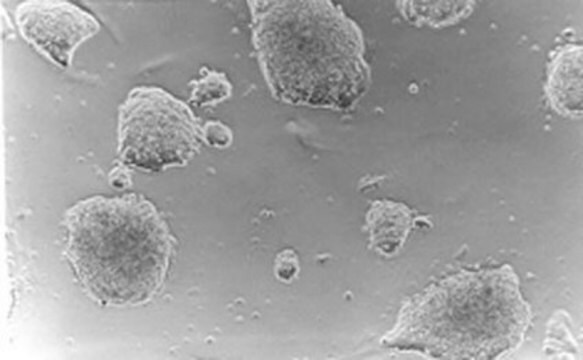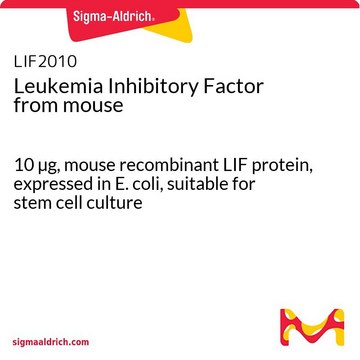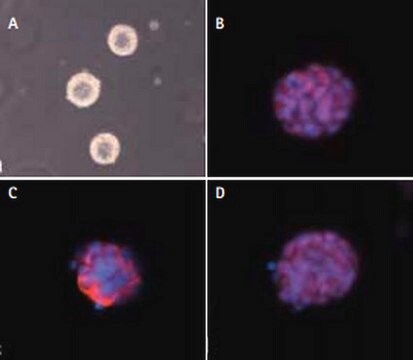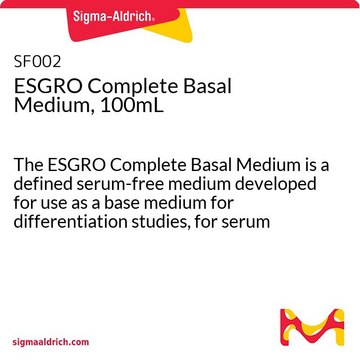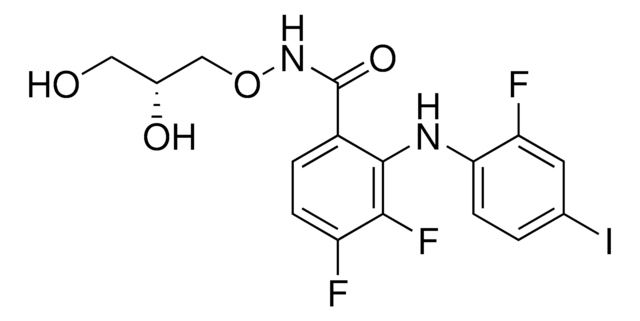ESG1107
ESGRO® Recombinant Mouse LIF Protein
ESGRO Leukemia Inhibitory Factor (LIF) supplement for mouse ES cell culture. Each vial contains 10^7 units/ml.
Synonym(s):
Mouse LIF, Mouse Leukemia Inhibitory Factor, Murine LIF, Murine LIF, Mouse LIF, mLIF, mLIF
About This Item
Recommended Products
Quality Level
assay
>95% (active component mLIF, SDS-PAGE)
form
liquid
manufacturer/tradename
Chemicon®
concentration
10000000 units/mL
technique(s)
cell culture | stem cell: suitable
input
sample type induced pluripotent stem cell(s)
sample type: mouse embryonic stem cell(s)
NCBI accession no.
UniProt accession no.
shipped in
wet ice
Gene Information
mouse ... LIF(16878)
General description
Application
SUGGESTED PROTOCOLS:
ES Cells: In D3 and MBL-1 pluripotential ES cell cultures it is routinely found that 1000 U ESGRO Supplement per 1.0 mL of tissue culture media is required to maintain ES cells with a stem cell phenotype. Similar concentrations of mLIF have also been used for germline transmission of genetically altered ES cells(E3).
At the recommended concentration 107 units of ESGRO is sufficient for 10.0 L of tissue culture media and 106 units of ESGRO Supplement is sufficient for 1.0 L of tissue culture media.
Physical form
Preparation Note
Storage and Stability
Analysis Note
Embryonic Stem Cell Assay: Differentiation inhibition at 1000 units/mL Murine myeloid leukemic, M1 Assay: Specific Activity >/= 108 units/mg
Legal Information
Storage Class
12 - Non Combustible Liquids
wgk_germany
WGK 1
flash_point_f
Not applicable
flash_point_c
Not applicable
Certificates of Analysis (COA)
Search for Certificates of Analysis (COA) by entering the products Lot/Batch Number. Lot and Batch Numbers can be found on a product’s label following the words ‘Lot’ or ‘Batch’.
Already Own This Product?
Find documentation for the products that you have recently purchased in the Document Library.
Customers Also Viewed
Articles
Leukemia Inhibitory Factor (LIF) is a stem cell growth factor used for the in vitro culture of pluripotent mouse embryonic stem cells (ES cells).
Naive pluripotent stem cells are located within the epiblast of mature blastocysts. These primitive “ground-state” cells may be cultured in vitro using specialized media and small molecule inhibitors.
Protocols
Stem Cell protocols for cryopreservation, thawing of cryopreserved stem cells and media preparation.
Our team of scientists has experience in all areas of research including Life Science, Material Science, Chemical Synthesis, Chromatography, Analytical and many others.
Contact Technical Service